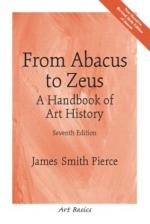|
This section contains 364 words (approx. 2 pages at 300 words per page) |
The abacus, an ancient calculating device, probably originated in Babylon around 2400 B. C. E. as a "counting box." It was the world's first calculator, and contemporary versions are still in use today.
An abacus is a wooden or metal rectangular frame with vertical bars containing movable beads. Prior to the advent of the abacus, stones were used as computational tools. This had two major disadvantages: it was easy to lose track while figuring, and finding or transporting large numbers of stones was difficult. By contrast, the abacus was a highly portable, easy-to-use device that proved to be an excellent alternative to a bag of stones.
The abacus was used throughout the Middle East and as far eastward as Japan. The number of vertical bars and beads on each bar varied from culture to culture, but the basic function of the abacus—calculating the costs and quantities of goods—remained the same.
The Chinese abacus, which is the most familiar form today, divides the frame with a horizontal bar. The classic version, known as suan-pan, or the "2/5 abacus," is thought to have developed around C. E. 1200. The area above the horizontal bar, heaven, contains two beads per vertical rod; each has a value of five. In the lower area, or earth, each vertical rod contains five beads, each with a value of one. Each vertical rod represents a unit of ten. Calculating is accomplished by moving beads toward or away from the horizontal divider. In the mid-1800s, the 2/5 abacus was replaced by the 1/5 abacus, and, by the 1930s, the most widely used form of abacus was the Japanese-made soroban, or 1/4 abacus.
 The Chinese abacus was an early calculator, which helped the user quickly determine sums.
The Chinese abacus was an early calculator, which helped the user quickly determine sums.
Although pocket calculators and other devices have replaced the abacus in most parts of the world, many Asian shopkeepers and schoolchildren still use the abacus for basic arithmetic functions such as adding, subtracting, and multiplying.
Bertha Kugelman Morimoto
See Also
Bibliography
Menninger, Karl. Number Words and Number Symbols. Cambridge, MA: M.I.T. Press, 1969.
Internet Resources
Ryerson University, Department of Electrical and Computer Engineering, The Abacus: The Art of Calculating with Beads.
|
This section contains 364 words (approx. 2 pages at 300 words per page) |



